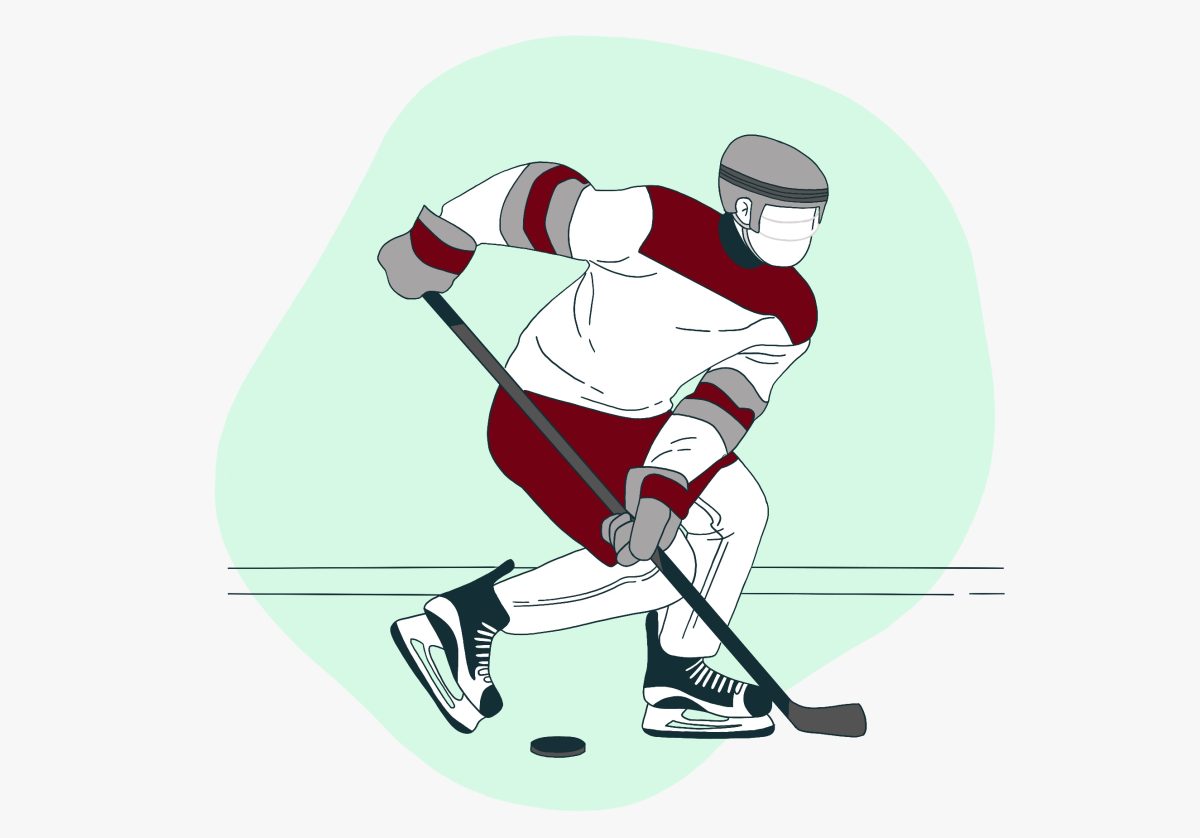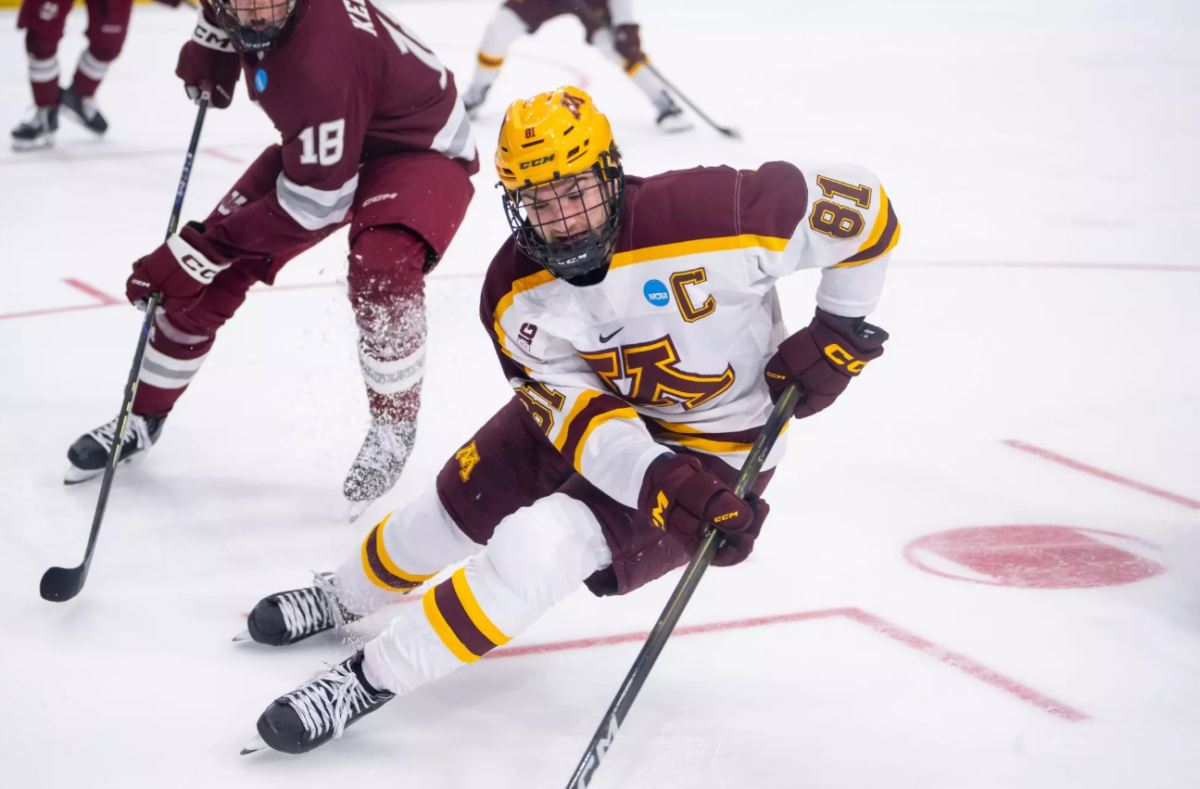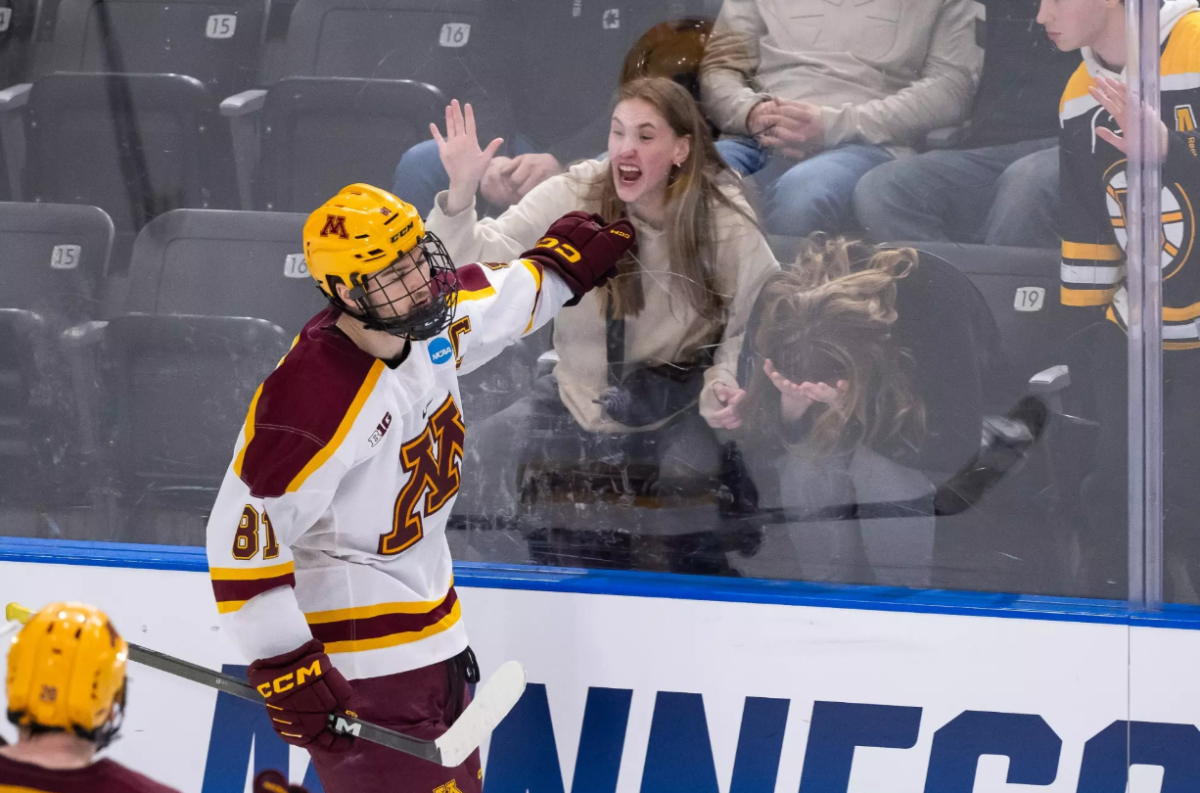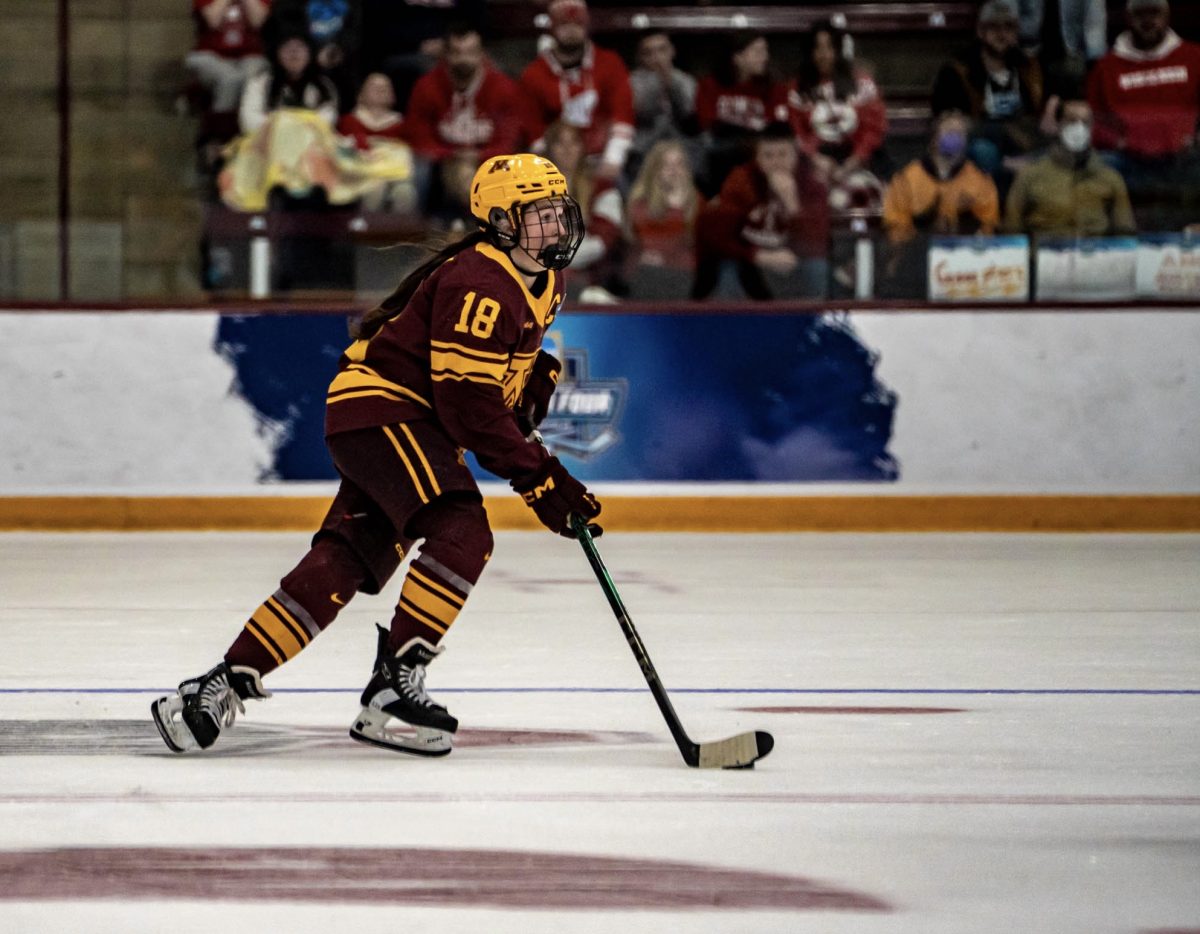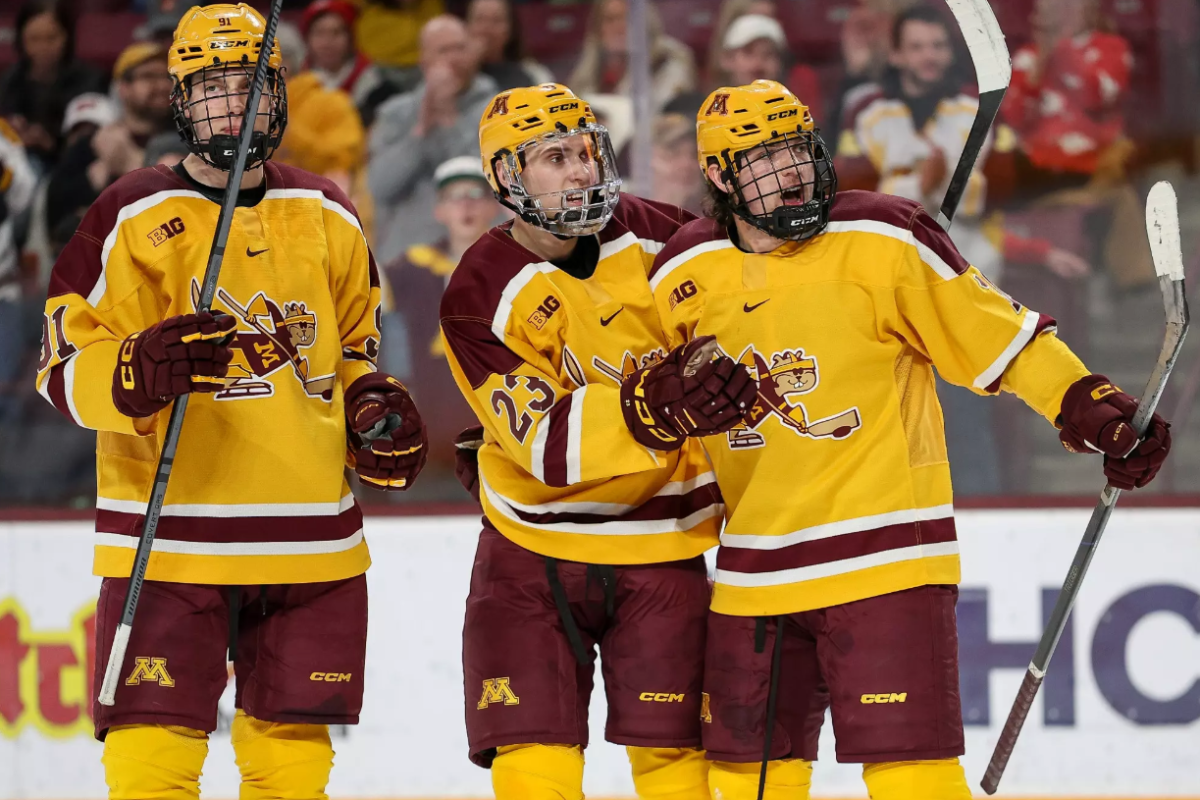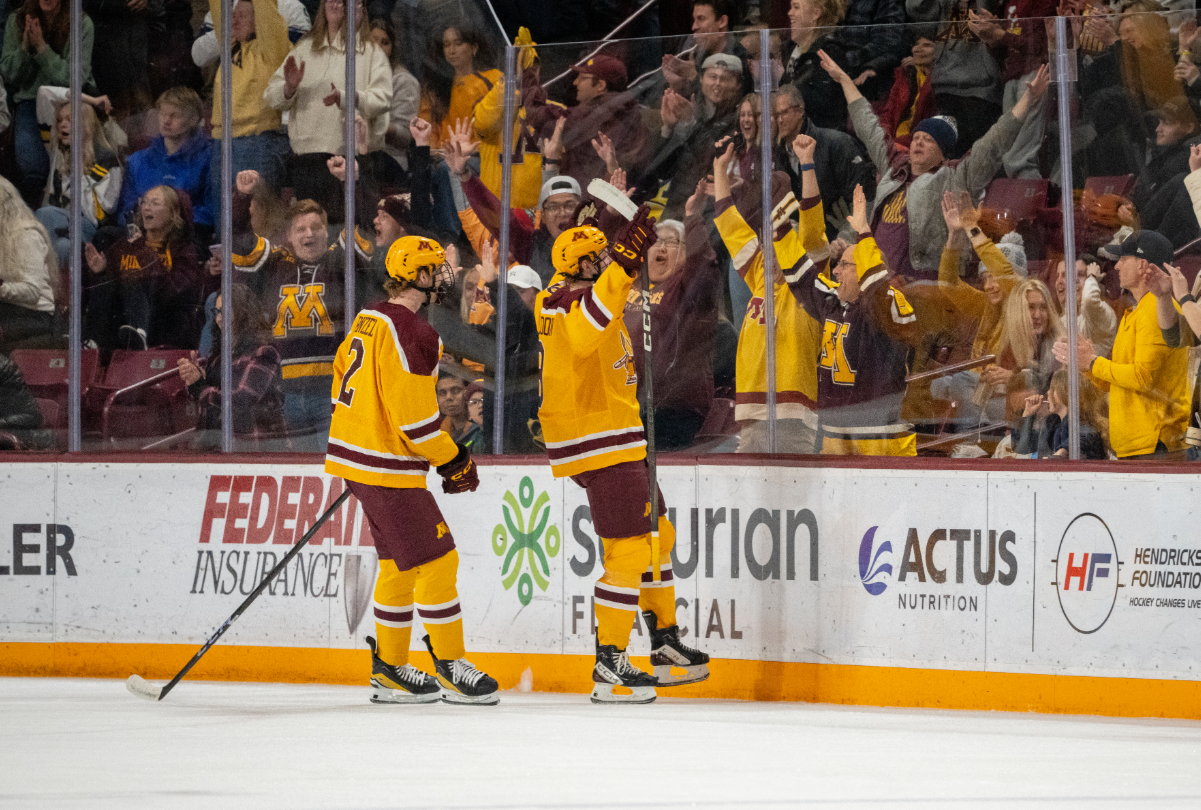USA Hockey approved a rule requiring youth hockey players to wear neck protection in practices and games beginning Aug. 1, according to a January statement.
This ruling applies to programs in the Minnesota Hockey organization, an affiliate of USA Hockey and the governing body of youth hockey in Minnesota.
The rule will not be enforced on adults but will be enforced at the youth, girls and junior age classifications.
Griffin Streed, a USA Hockey referee and a third-year student at the University of Minnesota, said the enforcement varies by district within the state.
“Mouth guards and neck guards are mandated on a district level, so it’s within USA Hockey but district-to-district,” Streed said.
In District 6 of Minnesota Hockey, which includes Eden Prairie, Edina and Minnetonka, neck protection was required at most youth levels prior to USA Hockey’s rule change.
“I think it was a good thing because starting from a young age, I just got used to it,” Streed said.
Streed said he stopped wearing a neck guard as a high school player as it was no longer required at that level.
Minnesota Class AA and A high school hockey do not follow Minnesota Hockey rules as they play under the Minnesota State High School League.
Streed said since hockey player Adam Johnson died during a professional game in England, he started wearing a neck guard in hockey in intramurals.
“It’s not worth risking,” Streed said.
Streed said for players, there might be resistance to wearing neckguards because they may look unappealing or are uncomfortable. He added opposing players in intramurals have made fun of him for wearing a neck guard and that he does not see a lot of players wearing them in intramural hockey.
“Would you rather have your neck cut open or look cool?” Streed said.
Jon Zywiec, a hockey parent and former coach from Hastings, Minnesota, has a 12-year-old son who started playing hockey four years ago. Zywiec said his son has been wearing a neck guard — along with some of his teammates — during practices.
Zywiec compared the new neck guard rule to when seat belts were first introduced in cars. He said players may find neckguards to be uncomfortable at first but will adjust to them over time.
“These kids never have an issue wearing seatbelts because they grew up wearing a seatbelt the whole time,” Zywiec said.
Zywiec added USA hockey should have mandated neck protection sooner.
“They had [neck guards], they’ve been making them, I think they should be wearing them,” Zywiec said.
In addition to neck guards, Zywiec is an advocate for other protective equipment. He said USA Hockey should also require youth hockey players to wear kevlar, cut-resistant socks to prevent players from being cut on the back of their legs.
Tyson Schmidtke, a resident of Edina, has two children who play competitive hockey. He said he noticed the impact on his local hockey community after Johnson’s death as players immediately started to wear neck guards.
“All the referees are trained — you need to have a mouth guard, you need to have a neck guard — or you can’t play,” Schmidtke said.
Schmidtke said the risk of playing hockey is no different from playing other sports like basketball, football or soccer. He added when he played basketball and football, he suffered numerous injuries, and his children were also injured playing sports.
“The reason I have my kids play sports is [because] of the life lesson it teaches them,” Schmidtke said. “There’s risks in everything that you do in life.”
Schmidtke said the younger generations of hockey players will never have the option to play without a neck guard, so it will be easier for them to accept the change.
“Wearing a neck guard is just going to be another piece of equipment that they need to wear every day,” Schmidtke said.


